|
| |
| |
|
Anshei Mischne Synagogue
... 112
Jackson Av
The
Memphis Jewish Community dates back to 1840 when immigrant
German Jews came to the city as peddlers from New Orleans and
St. Louis. Among these early immigrants were the
Goldsmith's and the Lowenstein's who opened small shops and
eventually became leading merchants. Most of the early
Jewish immigrants settled into the Pinch District. The
first Synagogue was established in 1853 in a bank building on
Market Square and soon many additional synagogues began to dot
The Pinch. The congregation of this Synagogue
broke away from another synagogue in 1900 and built |
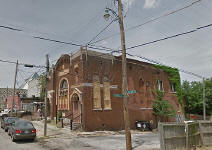 |
|
|
this
Synagogue in 1927. Orthodox Jews need to be within
walking distance of their synagogue in order to adhere to
traditional strictures against driving or riding on the Sabbath.
Thus there have been numerous mergers, synagogue name changes, etc.
as congregations migrated from their original "Pinch" locations.
This synagogue has had several names. After it ceased to be a
Synagogue, it was converted into a nightclub, but it is now vacant
and boarded up. It is on the list "to be demolished". |
|
|
|
|
|
|
|
|
|
Bellevue Baptist Church
... 70 N.
Bellevue
Bellevue
Baptist began in 1903 as a small mission of the Central Baptist Church.
The sanctuary shown in the postcard was enlarged many times and a new
one was built in 1952. The growing congregation became one of
the largest in the South, and relocated to eastern Shelby County.
Mississippi Blvd Christian bought Bellevue Baptist and this location
is now their mid-town campus. |
 |
|
| |
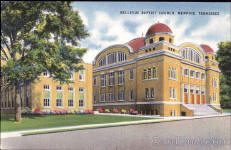 |
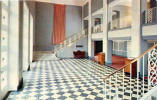 |
 |
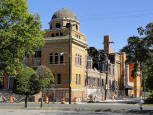 |
|
Bellevue Baptist |
Bellevue Baptist
Sanctuary |
Vintage photo |
Demolition |
|
| |
 |
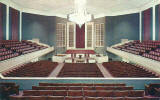 |
 |
|
75th
Anniversary |
Interior postcard |
1950s
Postcard of the interior |
|
| |
 |
<=
Bellevue Baptist is now located at I-40 and Appling in Cordova and is known to
truckers of the area as "Mile Marker - Fort God." The
church moved here in 1989.
"We were members for 35 years - of the old, but not the oldest
Bellevue. But I did go to the oldest Bellevue to hear Dr. Lee
preach, and also for BTYU (Baptist Training Youth Union). We, as
a young group from Hollywood Churches, would board a bus to Bellevue
and attend BTYU (party time), and then skip around the corner to the
drug store and be back on the steps of the church when the church
services were over." -
Elaine McAdams
|
|
|
|
|
|
|
|
|
|
|
|
|
 |
| Beth
El Emeth - PLUS |
|
Beth El Emeth Synagogue
... Poplar Av between 2nd and 3rd
and
B'nai Israel ... Children of Israel ...
Temple Israel ... Baron Hirsh ... Anshei
Sphard
Orthodox Jews need to be within walking distance of their
synagogue in order to adhere to traditional strictures against
driving or riding on the Sabbath. Thus there have been
numerous mergers, synagogue name changes, etc. as
congregations migrated from their original "Pinch" locations.
The changes are far too complex to cover on a page like this. |
|
|
|
|
Children
of Israel built the synagogue (above) in 1884 and occupied it
until 1916. Beth El Emeth occupied it from 1916 to 1957.
It was demolished in 1957. An office building now
occupies the site. Children of Israel moved into a
new synagogue also on Poplar Av (below) in 1916. Baron
Hirsh purchased a former African-American church at 4th-Washington
in 1912 and remaimed there until their new building was built
in the 1950s. |
|
|
 |
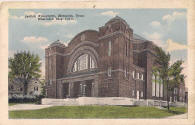 |
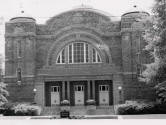 |
 |
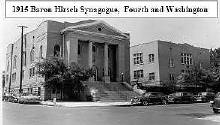 |
|
Children -Israel |
Temple of Israel |
Temple of Israel |
Samfield |
Baron Hirsh |
|
|
|
|
|
|
|
|
 |
Calvary Episcopal Church
... 135
N. Second
Calvary Episcopal
church was consecrated in 1844 and is the oldest Memphis Building in
continuous use. The design was by Rev Philip Alston, the
minister, who was an amateur architect. There were renovations
in 1881 and the building has remained virtually unchanged since that
time. It was once covered with a stucco veneer which, in 1961
was removed from the outer walls to expose the clay bricks that were
underneath. |
|
|
|
 |
 |
 |
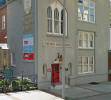 |
 |
|
Post Card |
Interior |
Calvary Entrance |
Calvary Parrish House |
Vintage Photo at Calvary |
|
|
|
|
|
|
|
|
|
|
|
Central Baptist Church
... 2nd Street, between Beale-Gayoso
This structure
stood above all others. Built by Edward Culliatt Jones between
1868-85, the church was best known for it's 125 foot steeple - the
tallest in the city. Central Baptist was demolished in 1937. For many years the lot was used for a gas
station and parking lot. Today, there's a parking garage built
for Peabody Place in the 1990s. |
| |
|
 |
 |
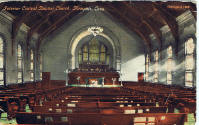 |
 |
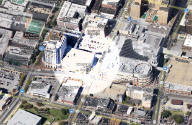 |
| ...with
Steeple |
Without
steeple |
Interior |
Edw C.
Jones |
Location |
|
|
|
|
|
|
|
|
|
|
|
|
|
 |
Clayborn Temple
... 280 Hernando at Pontotoc
This
building housed the Second Presbyterian Church until it was
sold to the African Methodist Episcopal Church in 1949 and the
name changed to Clayborn Temple. After the name
change, the church became an important center for
the black community during the Civil Rights Movement.
Martin Luther King spoke
at Clayborn several times and the sanitation worker marches
started and ended there. The Temple has been inactive
since the 1980s, and was originally on the market for one
million dollars - later reduced to $600,000. It is now
being renovated and is scheduled to reopen in 2017 ... and a
new "I Am A Man" plaza is being built next to it.
(See Second Presbyterian - below) |
|
|
|
|
|
|
|
|
|
|
|
|
|
|
|
|
|
|
|
|
 |
Collins Chapel CME Church
... 678
Washington
This is
the oldest African American religious congregation in Memphis,
dating back to 1841, when parishioners of First United Methodist at
2nd and Poplar, invited a group of slaves to join Sunday services.
Four years later the number of blacks at the church grew to over 500
and the church deeded its basement to them for separate services.
By 1859 the congregation purchased this lot on Washington and held
services outdoor until the chapel was built in 1860.
It was named for the Rev J. T. C. Collins, the congregations white
minister. Over the years, the congregation has included civil
rights pioneer Ida B. Wells, and W. C. Handy. |
|
|
|
|
|
|
|
|
|
|
|
First Baptist Church
... Second Street & Adams ...Linden & Lauderdale... Parkway and Poplar
The First
Baptist has been serving Memphis and the Mid-South since
1839. In 1845 the church acquired a lot on the northeast
corner of Second Street between Adams and Washington where their
building was constructed in 1847. During the Civil War this
building was used by the Union Army as a gangrene hospital from
1862-63 and was heavily damaged. The Second & Adams building
was remodeled between 1886-1888 and was subsequently sold in 1905 as
the new site for the Shelby County Courthouse. |
|
|
|
 |
|
First
Baptist |
|
| |
|
|
In 1907
First Baptist moved to a new location at Linden and Lauderdale
where it remained until moving east to Poplar and Parkway in
1951. This campus was expanded in 1958, 1964, 1983, and
1998. The First Baptist building at Linden and Lauderdale
(See postcard) is
still standing and is now Mt. Olive Cathedral C.M.E. Church. |
| |
|
|
|
|
|
|
|
*
FIRST BAPTIST CHURCH ...I was just going through photos on the
website tonight ... and started trying to identify the church
photo.
It is the First Baptist Church that was at Second and Adams
(Torn down for the Court Building. I located the
Lowenstein Warehouse building (in the background) first, then
compared to the Sanborn map of 1907 (where it is removed as the
future site of the Court Building), and then the 1897 Sanborn
map, which has it and the walled church yard outlined. I
looked up First Baptist on the website Churches Page and
it is definitely a match!... Phoebe Moore 10/3/2021 |
|
|
|
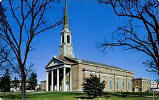 |
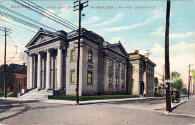 |
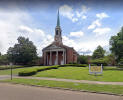 |
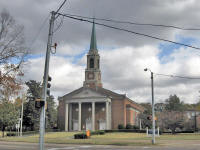 |
|
1951-1959 |
Postcard -First Baptist |
First Baptist |
First Baptist |
|
|
|
|
|
|
|
|
|
|
|
|
First Beale Street Baptist ...
379 Beale
| |
|
|
This is the first brick church in the south built by and for
former slaves to serve their community. The congregation
originated in 1849 in the home of a white Baptist minister.
A city ordinance at the time prohibited blacks from preaching to
a congregation and required a white man to be present during all
services. After Memphis fell to Union forces in 1862,
these regulations were dropped, but the church continued under
the leadership of a white minister until 1864.
|
 |
| |
|
|
In 1865 the church raised enough money to purchase their lot on
Beale. It then took them more than 22 years to raise enough money to build the magnificent church
designed by Edward Culliatt Jones and Mathias Baldwin. The
cornerstone was laid in 1871 and the building finished in 1885. The
twin towers were originally much taller and more ornate. One
tower was damaged during a windstorm in the 1880s and the other was
struck by lightning a number of times. But it remains a
graceful and imposing structure. Ida Wells published her
newspaper from here and W. C. Handy's memorial
service was held here in 1958. |
|
|
|
|
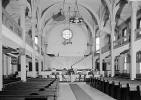 |
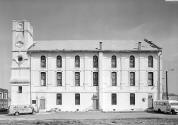 |
 |
 |
 |
 |
|
First Beale St Baptist |
Rare full side view |
Original towers |
Towers 1910 |
Statue 1938 |
Edw C. jones |
|
|
|
|
|
|
|
|
|
|
|
|
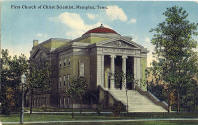 |
First Church of Christ Scientist ...
Dunlap & Monroe
The
beautiful church was
built around 1911, across from Forrest Park. The
building was sold to the UT Medical Center, who demolished the
building in 1961 to build a new structure for their Medical
Center.
|
| |
|
|
|
|
|
|
|
|
|
|
First Congregational Church
...
234 S. Watkins St ... 1000 S.
Cooper |
|
|
|
The church
was founded in 1862 with 25 members. Originally known as Union
Church, the name changed to Strangers Congregational Church. It
was founded by people who believed that slavery was wrong. The
name was changed to First Congregational in 1909. In 1991 the
church became an "Open and Affirming" congregation by stating that
gays and lesbians were welcome into the church. They
celebrated their "Centennial" in 1963. Their classical
modified Ionic building on S. Watkins was designed by Walk C. Jones
and dedicated in 1910 and entered the National Register in 1980.
This building may be saved the fate of it's neighbor, The Nineteenth
Century Club. Plans are to preserve the 103 year old building
and turn it into seven upscale apartments. The congregation
has now moved to the former Temple Baptist Church at 1000 S. Cooper
and today the building is home to over twenty different
organizations. |
|
|
 |
 |
 |
 |
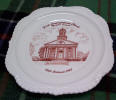 |
| 1st
Congregational |
1st Congregational |
Historical Marker |
Walk C.
Jones |
1st
Congreg. Plate |
|
| |
|
|
|
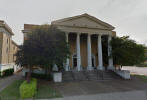 |
 |
 |
|
|
First Congregational
on Cooper |
First
Congregational
on Cooper |
Temple Baptist 1956 |
|
|
|
|
|
|
|
|
|
|
|
|
First Presbyterian Church ...
166
Poplar-3rd
Built in 1884 by
Edward Culliatt Jones. It originally had a large steeple - one
of the tallest and most graceful in the city. It was lost in
the church's early years and replaced with a square tower. Today,
the church's weekly Sunday Soup Kitchens feed the needy in downtown
Memphis, and the ministry programs help families throughout the
Mid-South. |
|
|
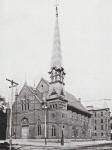 |
 |
 |
 |
 |
|
Early Photo |
Vintage Postcard |
Souvenir Plate |
1st Presbyterian |
Edw C. Jones |
|
|
|
|
|
|
|
|
|
First United Methodist Church
...
204 N. Second
In 1832 the
Methodists built the first religious building in Memphis at this
location. In 1843, they began construction on a larger church
which was replaced by a 3rd building in 1887 - the first all-stone
church in Memphis. It was completed in 1893. This church
burned to the ground in one of the most spectacular fires in
the city's history in 2006. A new Gothic-style church, similar
in appearance to the old structure is expected to be completed in
2011. |
 |
|
|
|
 |
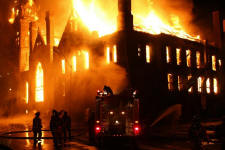 |
 |
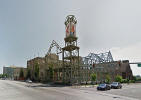 |
 |
|
1911 |
2006 Fire |
Ruins after the fire |
|
New Plans |
|
|
|
 |
 |
 |
 |
 |
| First church in Memphis-1832 |
Sunday School |
First Preacher |
First Pastor |
John Pepper |
|
|
|
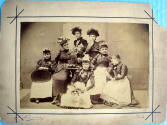 |
 |
 |
 |
 |
 |
|
1891 |
1906 |
History -
1985 |
Postcard |
Certificate 1900s |
1915 |
|
|
|
|
|
 |
A
souvenir booklet "The Evolution of a Sunday School" (below)
was published in 1924 to celebrate the opening of the Pepper
Memorial Sunday School Building next to the First Methodist Church.
The Pepper Building suffered smoke and water damage in the 2006 fire but
is still in use. This very rare booklet is posted in its
entirety below:
... Collection of
Dave French.
|
|
Cover |
|
|
|
|
|
|
|
|
|
|
|
|
|
|
Grace-St. Luke's Episcopal Church ...
1720 Peabody
Grace
church dates back to 1852 where the congregation met in a rented
downtown room. They eventually had their own downtown home at
Vance and Lauderdale. St. Luke's Episcopal Church was founded
in 1894 and had a fine home at Union and Idlewild. In 1912,
they moved to their new building at 1720 Peabody. (Their
previous building at Union-Idlewild became the famous Helen of
Memphis Shop in 1937). By The late 1930s, Grace Church had a
strong congregation, but found itself without an adequate building.
St. Luke's church had their new church in the heart of Memphis, but
had a declining membership. The two parishes merged in 1940.
The architect of Grace-St. Luke's is Bayard Snowden Cairns of
Hanker-Carirns. He also designed several important downtown
buildings, including the Chisca Hotel, St. Mary's Cathedral, and
Tech High School. |
|
|
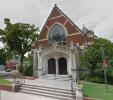 |
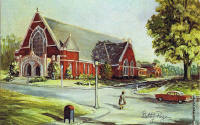 |
 |
 |
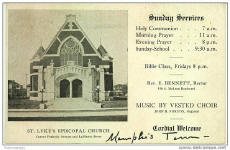 |
|
Grace St. Luke's |
Grace St. Luke's |
Rev Allison |
Interior |
Memorabilia 1914 |
|
|
|
|
Grace St. Luke's has seven extraordinary Tiffany stained glass
windows dating back to 1889. That year, one of the
benefactors of the Grace Church, Mrs. W. A. Gage, met a Tiffany
Glass representative at the Paris Exposition, and personally
underwrote three windows, including the glorious window
depicting Christ's ascension. The church commissioned
four more windows during the building of it's new church.
All the windows were installed under the direction of Louis
Comfort Tiffany himself. When Grace merged with St.
Luke's in 1940, it brought the windows and they were installed
throughout the building. They are the largest collection
of Tiffany windows in the south, and prime examples of
Tiffany's stained glass
art. |
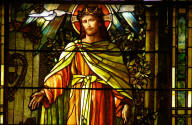 |
| |
Tiffany
"Christ's Ascension" |
|
|
|
|
EMAIL:
"The
building that eventually became the Helen of Memphis shop was the
former home of St. Luke's Episcopal Church, founded in 1894, which
built its first church home at Union and Idlewild in the early 1900s
before it moved to a new location in 1912 at Peabody and LeMaster.
Its sister congregation, Grace Church, founded in 1852, eventually
moved from its downtown home at Vance and Lauderdale, and the two
congregations merged to become Grace-St. Luke's Episcopal Church on
Thanksgiving Day 1940. GSL was at one time the largest
Episcopal parish in the state"
- Skip
Howard, Church Archivist, First Baptist Church of Memphis, 3-23-2013. |
|
|
|
|
|
|
|
|
|
|
Idlewild Presbyterian
...
1750
Union
The Idlewild congregation was formed in 1891. This building
was officially finished in 1928, just before the Great Depression.
It's considered one of the city's most majestic churches. It
was designed by architect George Awsumb. The impressive
complex of buildings includes the main church, cloistered walkways,
a chapter house, and a massive bell tower. The interior
features a French Gothic nave with carved dark oak beams.
|
|
|
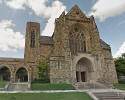 |
 |
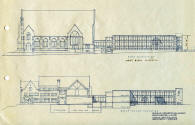 |
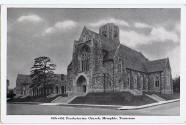 |
 |
|
Idlewild Presbyterian |
|
Architect's Drawing |
|
Geo. Awsumb |
|
 |
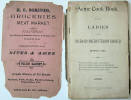 |
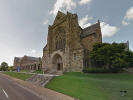 |
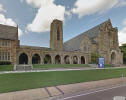 |
 |
|
1892 Idlewild Presbyterian Cook
Book |
|
|
1920s May Day |
|
|
|
|
|
|
|
|
|
|
|
Mississippi Blvd Christian Church
... 974-978 Mississippi Blvd.
Founded in 1921. It was the first
African-American congregation in the city of Memphis to belong to the
brotherhood of Christian Churches. This congregation purchased
the old Bellevue Baptist Church at 70 N. Bellevue and that has now
become their mid-town campus. |
 |
|
|
|
|
|
|
|
|
|
|
|
Second Presbyterian Church ...
280
Hernando at Pontotoc.
Organized in 1844, the church was built
in 1891. Design was supervised by Edward Culliatt Jones.
When the steeple was intact, this had to be one of the most
beautiful churches in Memphis. The Romanesque Revival exterior enclosed an unusual interior that's
dominated by the sanctuary. The building was sold to the
African Methodist Episcopal Church in 1949 and the name was changed
to Clayborn Temple. (See Clayborn Temple - above). |
 |
| |
1890s |
|
|
|
 |
 |
 |
 |
 |
 |
|
1909 |
Dedication
1893 |
2nd Presbyterian |
2nd
Presbyterian |
1904 |
E.. C.
Jones |
|
|
|
|
|
|
|
|
|
St. John's United Methodist ...
1207 Peabody
The
history of this church parallels the history of Memphis. St.
John's began in the downtown area in 1859 as
"Central Church Mission". By the end of the century it was
bursting at the seams and the members built this new sanctuary
further out on
Peabody. At the same time they chose to affiliate with another
denomination, becoming St John's United Methodist Episcopal Church.
The new church opened in 1907. |
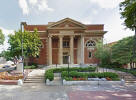 |
| |
|
|
|
|
|
|
|
|
|
|
St. Luke's United Methodist ...
480 S. Highland
This church has a long and distinguished
history. It was first known as Bethel Methodist. In
1888 the church moved to Semmes and Southern and was renamed Buntyn
Methodist Church. Then in 1925 the church moved to its present
location and became St. Luke's. The sanctuary was built in
1930 and the Educational wings were added in 1948 and 1955.
|
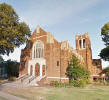 |
| |
|
|
|
|
|
|
|
|
|
|
St. Mary's Catholic Church ...
155 Market
This church,
organized in 1862 to serve the German Catholic population of
Memphis, was dedicated in 1870. Services were conducted in the
German language. A steeple was finally
completed in 1901, but was removed shortly afterwards for structural
reasons. The interior was modeled after the interior of St.
Peter's, though it is much smaller and more brightly painted. |
 |
| |
|
|
|
|
|
|
|
|
|
|
|
 |
St. Mary's Episcopal Church
...
692
Poplar near Alabama
St. Mary's Episcopal Church is one of
the oldest cathedrals in the South. This church was the Episcopal Cathedral
for Tennessee. It was begun in 1895 and completed in 1920.
The Diocesan House to the left of the church was built in 1902 as
the home for the bishop. St. Mary's was the third parish
organized in Memphis, with Calvary in 1832, and Grace in 1853, being
Mission Churches. The marble altar is a memorial to the
Episcopal sisters and priests who died in the 1878 yellow fever
epidemic.
|
| |
|
|
 |
 |
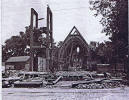 |
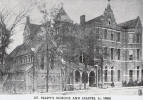 |
|
Original church 1871 |
Cathedral-School-Bis House |
Demolition 1898 |
School - Cathedral |
|
|
|
 |
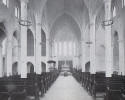 |
|
|
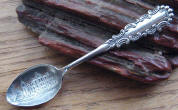 |
| 1908 |
Interior |
|
|
Souvenir
Spoon |
|
|
|
|
|
|
|
|
|
|
St. Patrick's Catholic ...
277 S.
Fourth
The church was established in 1866 at the corner of 4th and Linden.
The first St. Patrick was a two story structure with a school on the
first floor and the church on the second floor. From that time
on, St. Patrick's has included education as a significant part of
its mission. |
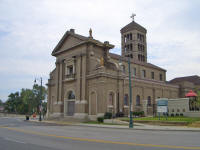 |
| |
|
|
 |
|
|
|
|
1906 Postcard |
|
|
|
|
|
|
|
|
|
|
|
|
|
|
St. Peter's Catholic Church ...
190 Adams at 3rd
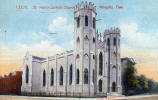 |
This is the
oldest Catholic Congregation in Memphis. Designed by Patrick
Keely, the building was begun in 1852. There was already a
church here, so the new building was built around the old.
Upon completion, the older building was broken up and carried
through the front door, one piece at a time. It's a Gothic
fortress-like building. There have been additions and
improvements over the life of the church. St. Peter's became
the city's first air-conditioned church in 1934. |
|
|
|
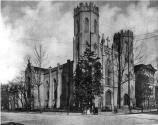 |
 |
 |
 |
|
St. Peters 1892 |
St. Peters |
Interior |
Architect |
|
|
|
|
|
|
|
|
|
|
|
Temple Baptist Church
...
986 S. Cooper |
|
|
|
Temple
Baptist Church opened July 1952...1800 seats. No other
information. The building is now occupied by the First
Congregational Church (See their listing, above) |
|
|
|
|
|
|
|
|
|
|
|
|
|
|
Trinity Lutheran Church
...
210 Washington Av
Memphis had a wave of German immigrants
in the early 1800s. In 1871 they purchased a lot on Washington
Avenue, which was "little more than a cow path with hitching posts
and cobblestones". Because the site was on a bluff, much
excavating was necessary. They completed the first story of
the two story building and held services there. Completion of the building was delayed by the yellow fever plagues
of the 1870s and the second floor remained unfinished and unused
until 1888. |
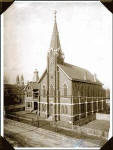 |
| |
Trinity
Lutheran |
|
|
|
 |
 |
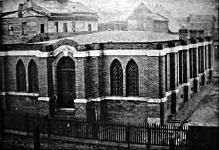 |
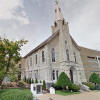 |
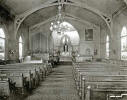 |
|
75th Anniversary
|
Rare photo of the "first story" |
Trinity Lutheran today |
Interior 1930 |
|
|
|
|
|
|
|
|
|
|
Union Av Baptist ...
2181 Union
The church began in 1902 and
purchased the land for their church in 1904. It's known as a
very traditional Southern Baptist Church.
|
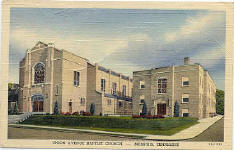 |
| |
|
|
|
|
|
|
|
|
|
|
Union Avenue Church of Christ ...
1930 Union
The original group forming the
Church of Christ in Memphis first met in homes, but, according
to an article in The Christian Chronicle, by Ealon V. Wilson,
the small congregation moved to more adequate facilities in
The Woman's Building in the late 1890's. Comparatively soon
thereafter, it moved into its own building on Gaylord Avenue.
The name of the street was later changed to Harbert Avenue.
In 1905, the group moved to this building at 1930 Union
Avenue. The congregation is now Midtown |
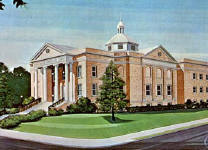 |
|
Church of Christ. The original congregation now meets at
Woodland Hills Church of Christ out east. |
|
|
|
|
|
|
|
|
|
|
|
Union Av Methodist ...
2117 Union at Cooper
Built in 1914 in the
Classical Revival Style. The architect was John Glaisford.
Although on the National Register of Historic Places, this Memphis
Landmark was no longer in use as a church. It was sold in 2011
to CVS Pharmacy with the intention of demolishing it to build a
pharmacy on the corner. After losing a legal battle in mid 2011, the building was
demolished. |
|
|
|
|
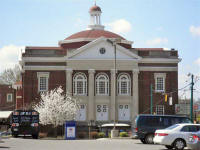 |
 |
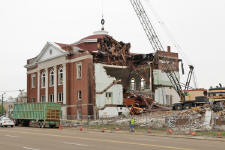 |
| |
Union Avenue Methodist |
Union Avenue Methodist |
Demolition
2011 |
|
|
|
|
EMAIL:
"I
was baptized as a baby at Union Avenue Methodist and was a member
until the late fifties. My father attended until his hundreth
year, sitting on the back row where he could 'nod off' occasionally.
The minister there went with me daily to visit Daddy during the month
he was in the hospital where he died at 103 years. I was really
angry when they decided to tear the church down to build another drug
store, and I wrote a letter of support to June West, at Memphis
Heritage." - Sarah Barrett Cave |
|
|
|
|
|
|
|
|
|
|
Credits |
|
|
|
The
Historic-Memphis website does not intentionally post copyrighted
photos and material without permission or credit.
On
occasion a "non-credited" photo might possibly be posted because we
were unable to find a name to give credit. Because of the nature of
our non-commercial, non-profit, educational website, we strongly
believe that these photos would be considered "Fair Use. We have
certainly made no monetary gain, although those using this website
for historic or Genealogy research have certainly profited. If by
chance,
we have posted your copyrighted photo, please contact us, and we'll
remove it immediately, or we'll add your credit if that's your
choice. In the past, we have found that many photographers
volunteer to have their works included on these pages and we'll
also do that if you contact us with a photo that fits a particular
page. |
|
|
|
The "Historic-Memphis" website would like to acknowledge and thank the
following for their contributions which helped make this website
possible:
Google
Earth, Memphis
Public Library, Memphis University Library, Memphis Law Library,
Memphis Commercial Appeal, Memphis Press Scimitar, Shelby County
Register of Deeds, Memphis City Schools, Memphis Business Men's
Club, Memphis Chamber of Commerce, Memphis City Park Commission,
Memphis Film Commission, Carnival Memphis, Memphis Historical
Railroad Page, Memphis Heritage Inc, Beale Street Historic District,
Cobblestone Historic District, Memphis Historic Districts, Vance
Lauderdale Family Archives, Tennessee State Archives, Library of
Congress, Kemmons Wilson Family, Richard S. Brashier, Lee Askew,
George Whitworth, Woody Savage and many individuals whose assistance is
acknowledged on the pages of their contributions. Special
thanks to Memphis Realtor, Joe Spake, for giving us carte blanche
access to his outstanding collection of contemporary Memphis photos.
We do not have high definition copies of the photos on these
pages. If anyone wishes to secure high definition photos,
you'll have to contact the photographer or the collector.
(To avoid any possibility of contributing to SPAM, we do not
maintain a file of email addresses for anyone who contacts us). |
|
|
|
|